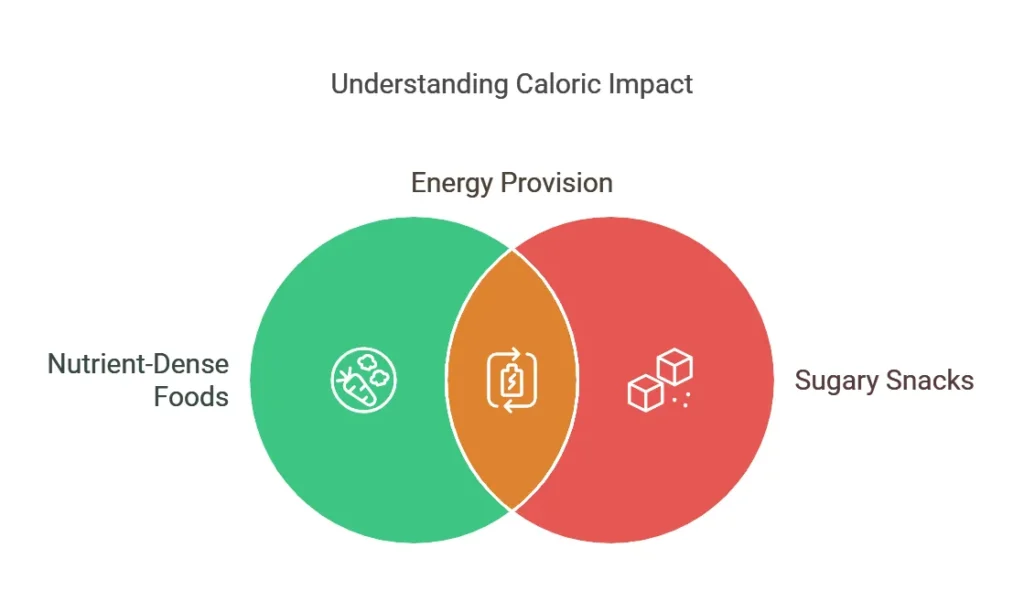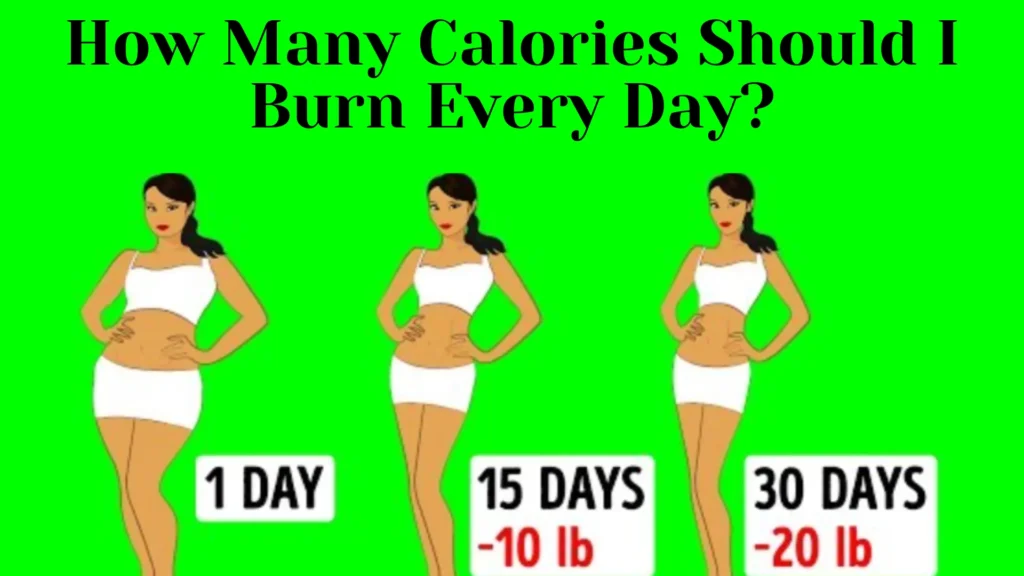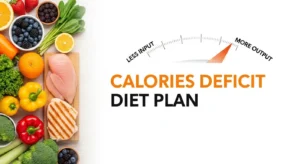Introduction
Calories are at the heart of every fitness and nutrition conversation, yet understanding how they work can feel overwhelming. Whether your goal is to shed pounds, build muscle, or maintain your current weight, figuring out how many calories you should burn daily is critical. This guide explores the science of caloric balance, breaks down the factors influencing your energy needs, and offers actionable insights to help you achieve your health objectives. Let's dive into the fascinating world of calories and uncover how they power your body.

Why Caloric Balance Matters
At its core, caloric balance is the interplay between the energy you consume through food and the energy you expend through daily activities and bodily functions. Maintaining this balance determines whether you gain, lose, or maintain weight. But it’s more than just numbers; caloric balance impacts your energy levels, mood, and overall health. A consistent imbalance—whether you're eating too much or too little—can lead to unintended consequences, from weight gain to nutrient deficiencies or fatigue. Understanding this balance allows you to align your caloric intake and expenditure with your goals, ensuring long-term success.
The Basics of Calories: Fuel for Your Body
Calories are units of energy, and your body requires them to perform virtually every function. From keeping your heart beating to fueling intense workouts, calories are your body's primary source of power. However, not all calories are created equal. The quality of the food you consume affects how efficiently your body uses these calories. For example, calories from nutrient-dense foods like vegetables and lean proteins support optimal function, while those from sugary snacks may provide quick energy without lasting benefits. Recognizing calories as fuel helps you approach your diet and exercise plan with a strategic mindset.

Part 1: Understanding Calories and Energy
What Are Calories?
Definition and Importance
Calories are a measurement of energy. When you eat food, your body breaks it down to extract the energy stored within, which is then used to sustain life and activity. Simply put, calories are the fuel your body burns to operate. Without enough calories, essential processes like breathing, digestion, and brain activity could not occur efficiently. Conversely, consuming too many calories without burning them off leads to storage as fat, which can result in weight gain over time.
How the Body Uses Calories
The energy from calories supports three main categories of activity:
- Basal Metabolic Rate (BMR): This is the minimum energy your body requires to perform vital functions such as breathing, circulating blood, and regulating temperature. BMR accounts for the majority of calories burned each day.
- Physical Activity: This includes any movement, from walking and climbing stairs to intense workouts. Physical activity can significantly increase calorie burn depending on the type, duration, and intensity of the activity.
- Thermic Effect of Food (TEF): Digesting, absorbing, and metabolizing food also burns calories, although this accounts for a smaller portion of daily energy expenditure.
Understanding these components highlights how your body uses calories and underscores why managing your intake and activity levels is essential for maintaining energy balance.
Caloric Intake vs. Caloric Expenditure
The Energy Balance Equation
The energy balance equation is straightforward:
- Energy in (calories consumed) versus Energy out (calories burned) determines changes in body weight.
- When calorie intake equals calorie expenditure, your weight remains stable.
- A calorie surplus (more in than out) leads to weight gain, while a calorie deficit (more out than in) results in weight loss.
Although simple in concept, achieving the right balance is highly individual, depending on factors such as metabolism, activity levels, and dietary habits.
The Role of Metabolism in Calorie Burning
Metabolism encompasses all the chemical processes your body uses to convert food into energy. While your BMR represents the baseline calorie usage, your total daily energy expenditure (TDEE) includes physical activity and TEF. Metabolism varies widely among individuals due to genetics, age, and muscle mass. Building lean muscle through strength training, for instance, can increase your resting metabolic rate, allowing you to burn more calories even at rest. By understanding and optimizing your metabolism, you can better manage your caloric needs and achieve your health goals.
Part 2: Factors Influencing Caloric Needs
Basal Metabolic Rate (BMR)
What Is BMR?
Your Basal Metabolic Rate (BMR) represents the number of calories your body requires to perform essential functions while at rest. These functions include breathing, blood circulation, cell production, and maintaining body temperature. BMR accounts for approximately 60–70% of your total daily calorie expenditure. Understanding your BMR is the foundation of determining how many calories your body needs daily.
How to Calculate Your BMR
BMR can be calculated using specific formulas like the Harris-Benedict Equation or the Mifflin-St Jeor Equation, which take into account your weight, height, age, and gender:
- Mifflin-St Jeor Equation (more accurate):
- For men: BMR = 10 × weight (kg) + 6.25 × height (cm) – 5 × age (years) + 5
- For women: BMR = 10 × weight (kg) + 6.25 × height (cm) – 5 × age (years) – 161
While these formulas provide a good estimate, your actual BMR may vary based on factors like muscle mass and hormonal health.
Physical Activity Level
Sedentary vs. Active Lifestyles
Your daily physical activity significantly impacts the number of calories you burn. A sedentary lifestyle, characterized by minimal physical movement, means most of your calorie expenditure comes from your BMR. Conversely, an active lifestyle that includes regular exercise or physically demanding work increases your daily caloric burn.
How Exercise Impacts Caloric Expenditure
Exercise adds an additional layer to your total daily energy expenditure (TDEE). Aerobic activities, such as running or swimming, primarily burn calories during the activity, while strength training builds muscle that increases your BMR over time. Even low-impact activities like walking or yoga contribute to caloric burn and overall health.
Age, Gender, and Genetics
Differences in Caloric Needs by Age and Gender
Age and gender significantly influence your caloric needs.
- Age: Metabolism naturally slows with age, reducing the number of calories burned at rest. This is partly due to the gradual loss of muscle mass as we age.
- Gender: Men typically have higher caloric needs than women due to greater muscle mass and larger body size, which require more energy for maintenance.
The Influence of Genetics on Metabolism
Your genetic makeup can influence how efficiently your body burns calories. Some individuals naturally have faster metabolisms, while others may struggle with a slower metabolic rate. While genetics set the baseline, lifestyle choices like diet and exercise can still significantly impact overall energy expenditure.
Health Conditions and Hormones
Medical Conditions That Affect Caloric Burn
Certain medical conditions can alter how your body uses calories. For instance:
- Hypothyroidism slows metabolism, reducing calorie burn.
- Hyperthyroidism accelerates metabolism, increasing caloric expenditure.
- Conditions like PCOS (Polycystic Ovary Syndrome) can affect weight regulation and energy use.
The Role of Hormones Like Thyroid and Insulin
Hormones play a crucial role in managing metabolism and energy balance. The thyroid gland regulates your metabolic rate, while insulin controls how your body processes and stores energy. Imbalances in these hormones can make it harder to maintain caloric balance, highlighting the importance of addressing underlying health issues when setting caloric goals.

Part 3: Determining Your Daily Caloric Needs
Setting Your Caloric Goals
For Weight Loss
To lose weight, you need to create a calorie deficit, meaning you burn more calories than you consume. A safe and sustainable deficit is typically 500–750 calories per day, leading to a weight loss of 0.5–1 kg (1–2 pounds) per week. Crash diets or extreme deficits can lead to muscle loss and metabolic slowdown, so gradual reductions are recommended.
For Weight Maintenance
To maintain your weight, your caloric intake should match your TDEE. This requires consistency in both dietary habits and physical activity. Understanding your activity levels and adjusting your caloric intake during periods of increased or decreased movement is key to maintaining balance.
For Weight Gain
If your goal is to gain weight, you’ll need to consume a calorie surplus, typically 250–500 additional calories per day. Focus on nutrient-dense foods like lean proteins, whole grains, and healthy fats to ensure weight gain is primarily muscle, not fat.
Using Tools and Calculators
Popular Caloric Need Calculators
Many online tools, such as the Harris-Benedict or Mifflin-St Jeor calculators, help estimate your BMR and TDEE. These tools factor in your age, weight, height, gender, and activity level to provide personalized calorie recommendations.
Pros and Cons of Tracking Apps
Pros:
- Apps like MyFitnessPal or Cronometer make it easy to track calories and monitor progress.
- They provide insights into nutrient intake, helping you create a balanced diet.
Cons:
- Over-reliance on tracking can lead to stress or obsessive behaviors around food.
- App data may not always account for individual variations in metabolism or activity.
By setting realistic goals and using tools strategically, you can tailor your caloric intake to align with your personal objectives, fostering sustainable results over time
Part 4: How to Burn Calories Effectively
Everyday Activities That Burn Calories
Household Chores and Errands
Burning calories doesn’t always require a gym session—everyday tasks can significantly contribute to your energy expenditure. Activities like vacuuming, mopping, or gardening not only keep your living space tidy but also engage large muscle groups, leading to a steady calorie burn. Running errands, especially if you walk or carry items, can further increase your daily activity level without requiring extra time in your schedule.
Walking and Commuting
Walking is one of the simplest and most accessible ways to burn calories. Opting for stairs instead of elevators, parking farther away, or incorporating brisk walks into your commute can boost your caloric burn. Even short walks throughout the day add up, improving your overall fitness and reducing sedentary time.
Structured Exercise Routines
Cardio Workouts: Running, Swimming, Cycling
Cardiovascular exercises are excellent for burning calories quickly. Running engages multiple muscle groups and is effective for high-calorie burn in a short time. Swimming provides a full-body workout while being gentle on the joints, making it ideal for individuals with injuries or mobility issues. Cycling, whether outdoors or on a stationary bike, is another efficient way to torch calories while improving cardiovascular health.
Strength Training: Building Muscle for Long-Term Burn
Strength training may not burn as many calories during the workout itself compared to cardio, but its long-term effects make it indispensable. Building lean muscle increases your resting metabolic rate, meaning your body burns more calories even when you're not active. Incorporating compound movements like squats, deadlifts, and bench presses can maximize calorie expenditure during each session.
High-Intensity Interval Training (HIIT)
What Is HIIT?
High-Intensity Interval Training (HIIT) involves alternating short bursts of intense activity with periods of rest or low-intensity exercise. For example, sprinting for 30 seconds followed by walking for 1 minute is a typical HIIT pattern.
Benefits of HIIT for Calorie Burning
HIIT workouts are incredibly efficient, allowing you to burn a significant number of calories in a short time. Additionally, HIIT triggers the afterburn effect (excess post-exercise oxygen consumption or EPOC), where your body continues to burn calories at an elevated rate for hours after the workout. HIIT also improves cardiovascular endurance and can be adapted to any fitness level, making it a versatile and time-saving exercise option.
Part 5: Myths and Misconceptions
Spot Reduction and Calorie Burn
Debunking Myths About Targeted Fat Loss
A common misconception is that you can target specific areas of your body for fat loss, such as doing sit-ups to burn belly fat. In reality, fat loss occurs systemically, meaning your body decides where to shed fat based on genetic and hormonal factors. Exercises like crunches can strengthen and tone muscles but won't directly reduce fat in targeted areas.
“Magic” Exercises for Maximum Burn
Why Balanced Workouts Always Win
Another myth is that certain “magic” exercises can dramatically outpace others in calorie burn. While activities like burpees or kettlebell swings are efficient, the key to sustained results lies in a well-rounded fitness regimen. Combining cardio, strength training, and flexibility work ensures comprehensive benefits, including calorie burn, muscle growth, and injury prevention.
The “Calories Burned” on Machines: Can You Trust Them?
Calorie counts displayed on treadmills, ellipticals, or other machines should be taken with a grain of salt. These estimates often assume generic metrics and don’t account for individual factors like body composition, fitness level, or workout intensity. While they can serve as rough guides, using wearable trackers or heart rate monitors may provide more personalized and accurate data.
By understanding these myths and focusing on effective, science-backed strategies, you can set realistic expectations and achieve your fitness goals more efficiently.
Part 6: Calories Burned vs. Calories Consumed
Why Both Matter for Results
Calories burned and consumed are two sides of the same coin when it comes to managing weight and overall health. If you only focus on burning calories without monitoring your intake, you may unintentionally overeat and negate your efforts. Conversely, cutting calories excessively without accounting for your activity level can lead to fatigue, muscle loss, and metabolic slowdown. Balancing both ensures that your body gets the nutrients it needs while still creating the necessary conditions for weight change.
Achieving Sustainable Weight Goals
Sustainability is the key to long-term success. Extreme calorie deficits or overly intense workout routines might yield quick results, but they are rarely maintainable and often lead to burnout or rebound weight gain. Instead, aim for gradual changes—combine a moderate calorie deficit with consistent physical activity to achieve weight loss, or slightly increase your caloric intake with strength training to promote muscle growth.
Timing of Calorie Burn
Does the Timing of Workouts Matter?
While the timing of your workouts may influence performance, its impact on calorie burn is less significant. Some studies suggest exercising in the morning on an empty stomach (fasted cardio) may enhance fat utilization, while others show similar results regardless of timing. Ultimately, the best time to work out is when you feel most energetic and can maintain consistency. Evening workouts may suit night owls, while morning sessions might be better for early risers. Pick a schedule that aligns with your lifestyle and energy levels.
Conclusion
Finding the Right Balance for Your Goals
Calorie management isn’t just about cutting back or pushing harder—it’s about striking a balance that works for your body, goals, and lifestyle. By understanding how calories are burned and consumed, tailoring your activity levels, and aligning them with your nutrition, you can take charge of your health journey.
Consistency Over Perfection
Perfection isn’t necessary to see results, but consistency is. Whether it’s committing to a daily walk, prioritizing whole foods, or tracking your progress periodically, small, sustained efforts compound into meaningful changes. Focus on building habits that you can maintain long-term, and success will follow.
FAQs
How many calories should I burn daily to lose weight?
To lose weight, aim for a calorie deficit of 500–750 calories per day, which typically leads to a safe and sustainable weight loss of 0.5–1 kg (1–2 pounds) per week. This includes calories burned through both daily activities and structured exercise.
Can I rely solely on exercise to create a calorie deficit?
While exercise is a powerful tool for burning calories, relying solely on it can be challenging. Combining exercise with mindful eating ensures a balanced calorie deficit that’s easier to sustain.
Do calorie needs decrease with age?
Yes, calorie needs generally decrease with age due to a natural decline in metabolism and muscle mass. Regular strength training and maintaining an active lifestyle can help counteract this effect.
What are the easiest ways to burn extra calories?
Incorporate more movement into your daily routine with simple activities like walking, taking the stairs, or doing household chores. Short, high-intensity workouts or brisk walks are also effective for burning extra calories.
Are calorie trackers accurate?
Calorie trackers, whether on fitness machines or apps, provide estimates and can vary in accuracy. They don’t always account for individual factors like body composition or exercise intensity. Use them as a guide rather than an exact measure.








